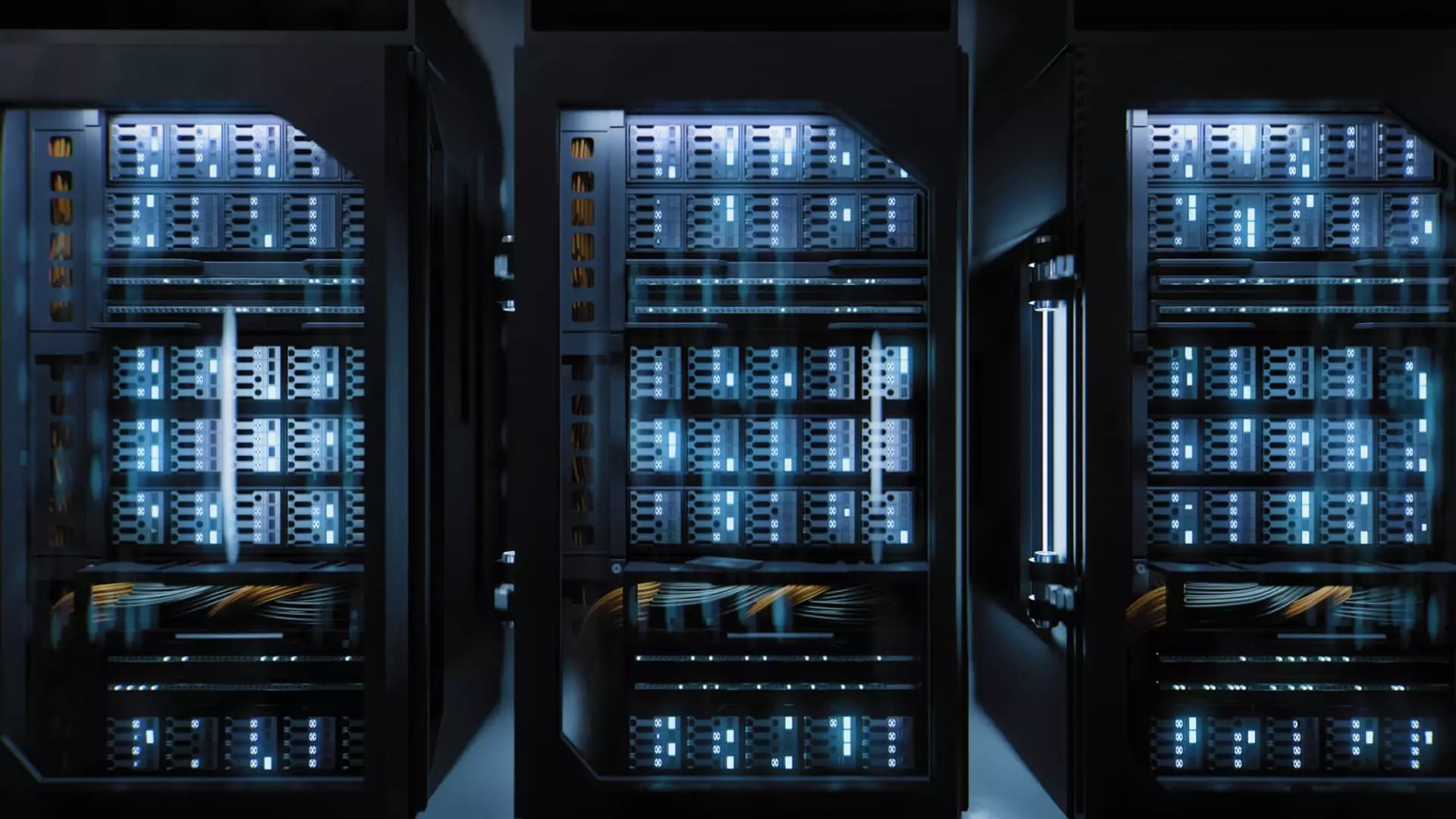The proliferation of artificial intelligence (AI) is reshaping data center operations across Europe. As companies ramp up their AI capabilities, the necessary infrastructure is under increasing strain. This article delves into the intricate web of challenges that arise from this technological boom, especially in relation to energy consumption and environmental impact.
According to recent research from Goldman Sachs, the anticipated impact of AI on data centers is staggering, projecting a 160% surge in demand by 2030. This dramatic rise poses a serious threat to Europe’s existing decarbonization efforts. As enterprises integrate powerful chips, specifically graphics processing units (GPUs) utilized for extensive AI computations, data centers grapple with significantly heightened energy requirements. The GPU-powered AI systems can consume energy equivalent to that of multiple homes, intensifying the call for efficient energy solutions to manage burgeoning demand.
These specialized chips, essential for training advanced neural networks, generate substantial heat. Consequently, maintaining optimal operational temperatures has unleashed a wave of complexity in cooling strategies. The expectation for lower water temperatures by chip manufacturers exacerbates the intricacies, as existing data center cooling systems may struggle to meet these new demands without additional burdens on energy consumption and sustainability goals.
The Cooling Dilemma: Navigating Heat and Efficiency
The imperative to cool data centers has never been more critical. High-powered GPUs can necessitate up to 120 kilowatts of power in mere square meters of space, compelling operators to rethink traditional cooling methods. Michael Winterson, chair of the European Data Center Association (EUDCA), warns that lowering water temperatures to adapt to these chips may regress European data centers to unsustainable practices reminiscent of two decades prior. His concerns emphasize that sustaining proper chip function without compromising environmental objectives will require innovative approaches.
The potential reliance on liquid cooling technologies, which promise enhanced efficiency over conventional air cooling methods, brings additional complexity. Herbert Radlinger from NDC-GARBE notes the unexpected shift towards liquid cooling technologies, as many anticipated increased temperature tolerances. This unexpected pivot raises questions regarding the overall energy strategy and further complicates compliance with the European Commission’s ambitious energy reduction targets.
Regulatory Pressures and Energy Efficiency Goals
European energy officials are attentive to the implications of these developments. The EU has set forth an Energy Efficiency Directive, aiming for an 11.7% reduction in energy consumption by 2030. However, new projections concerning data center energy usage illustrate a potential for 28% growth due to AI advancements, with some forecasts suggesting an escalation of two or three times that figure. Such alarming trends threaten the EU’s clean energy roadmap and underscore the urgency for industrywide reforms.
As discussions unfold between industry leaders and policymakers, there is mounting pressure to not only adopt advanced cooling techniques but to assess how power utilization effectiveness (PUE) can be maintained or enhanced despite rising energy demands. Schneider Electric’s Steven Carlini underscores the significance of effective energy use, emphasizing that cooling remains the second-largest energy consumer after IT loads in data centers.
As the industry evolves, alignment between technological advancements and sustainable practices emerges as a focal point. Equinix’s Ferhan Gunen notes that the transition toward more energy-intensive chips requires a delicate balancing act; embracing higher-performance hardware while simultaneously considering environmental ramifications is a nuanced challenge that necessitates continuous collaboration with customers.
AI chip suppliers like Nvidia are grappling with similar challenges, promoting design architectures that purportedly lessen energy consumption compared to their predecessors. Their recent endeavors, including the introduction of the Blackwell GPU platform, aim to offer considerable energy savings while meeting the growing appetite for AI capabilities.
New entrants such as Nebius highlight the increasing significance of investment into infrastructure designed for advanced AI applications. With aspirations to allocate substantial resources into AI infrastructure by the mid-2020s, they underscore a belief that while initial costs may be trying, innovation will ultimately lead to improved cost efficiency and power effectiveness.
The Road Ahead: A Call for Sustainable Innovation
The data center sector stands at a crossroads, where growth and sustainability must coexist. The race for AI superiority invites a scrutiny of existing operational paradigms, underpinning the fragility of energy resources and environmental standards. As stakeholders from various domains rally to address these challenges, the focus must remain on crafting solutions that foster innovation without sacrificing ecological integrity.
The pathway toward a sustainable future for European data centers lies in embracing cutting-edge technologies and fostering cooperation among industry leaders and regulatory authorities. By aligning efforts, the sector can transition from mere compliance to proactive leadership in the age of AI, reshaping its narrative toward one of responsibility and resilience.


Leave a Reply